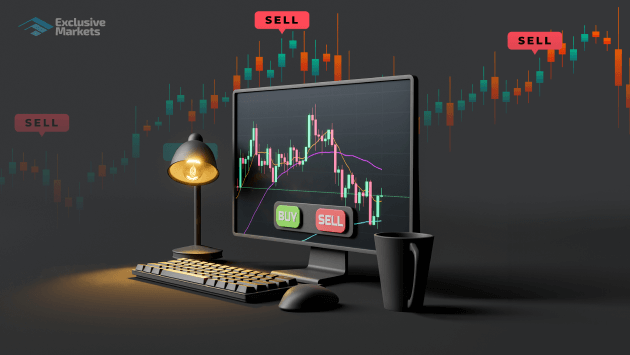A Comprehensive Guide for Forex Trading Beginners

A Comprehensive Guide for Forex Trading Beginners
Forex trading can seem overwhelming for beginners, but with the right knowledge and tools, anyone can successfully navigate the Forex market. In this guide, we will explore fundamental concepts, practical strategies, and essential tips that will help you get started on your Forex trading journey. For a more in-depth analysis, you can always check out forex trading beginners https://trading-bd.com/.
What is Forex Trading?
Forex, or foreign exchange, is the global marketplace for trading national currencies against one another. The Forex market is the largest and most liquid financial market in the world, with trillions of dollars being traded daily. Unlike traditional stock markets, which operate during specified hours, the Forex market is open 24 hours a day, five days a week, accommodating traders from all around the globe.
Understanding Currency Pairs
In Forex trading, currencies are traded in pairs. This means you will always buy one currency while selling another. Each currency pair consists of a base currency and a quote currency. For instance, in the pair EUR/USD, EUR is the base currency, and USD is the quote currency. The price of the pair indicates how much of the quote currency is needed to purchase one unit of the base currency.
Major Currency Pairs
Major currency pairs include the most traded currencies and typically have the highest liquidity. These pairs often include the US dollar (USD) and can include:
- EUR/USD (Euro/US Dollar)
- USD/JPY (US Dollar/Japanese Yen)
- GBP/USD (British Pound/US Dollar)
- AUD/USD (Australian Dollar/US Dollar)
- USD/CHF (US Dollar/Swiss Franc)
Minor Currency Pairs
Minor currency pairs involve currencies that are less frequently traded than the major pairs. Examples include:
- EUR/GBP (Euro/British Pound)
- AUD/JPY (Australian Dollar/Japanese Yen)
- GBP/CAD (British Pound/Canadian Dollar)
Exotic Currency Pairs
Exotic pairs consist of one major currency paired with a currency from a developing or smaller economy. These pairs often have larger spreads and can be more volatile. An example is:
- USD/THB (US Dollar/Thai Baht)
- EUR/TRY (Euro/Turkish Lira)
Forex Trading Platforms
To start trading in the Forex market, you will need to choose a trading platform. A trading platform is software that allows you to place trades, manage your account, and analyze market trends. Popular trading platforms include:
- MetaTrader 4 (MT4)
- MetaTrader 5 (MT5)
- cTrader

These platforms offer various analytical tools, indicators, and user-friendly interfaces that cater to traders of all levels.
Fundamental Analysis
Fundamental analysis involves evaluating economic indicators, news events, and geopolitical factors. Key aspects to consider include:
- Central bank policies (e.g., interest rate changes)
- Economic data releases (e.g., GDP, employment figures)
- Political stability and economic performance of countries
Staying informed about economic news and reports can help traders make better-informed decisions regarding their trades.
Technical Analysis
Technical analysis is the study of historical price movements to predict future price changes. Traders use charts and technical indicators to make their trading decisions. Key components of technical analysis include:
- Chart patterns (e.g., head and shoulders, flags)
- Technical indicators (e.g., moving averages, RSI, MACD)
- Support and resistance levels
By understanding these elements, traders can identify potential entry and exit points for their trades.
Risk Management
One of the most critical aspects of Forex trading is risk management. Successful traders always ensure they have a solid risk management strategy in place. Here are some essential risk management techniques:
- Define your risk tolerance: Know how much you can afford to lose on a trade.
- Use stop-loss orders: Set predetermined exit points to limit losses.
- Diversify your investments: Do not put all your capital into one currency pair.
Developing a Trading Plan
A trading plan is essential for any trader, especially beginners. A well-structured trading plan should include:
- Your trading goals and objectives.
- Risk management rules.
- Criteria for entering and exiting trades.
- Daily, weekly, and monthly review processes.
Your trading plan will serve as a roadmap to guide you through your Forex trading journey and help you stay disciplined.
Continuous Learning and Adaptation
Forex trading is a dynamic field that requires continuous learning. Market conditions, economic indicators, and global events are always changing, so adapting your strategies is key to success. Here are a few ways to enhance your knowledge:
- Follow Forex news websites and forums.
- Participate in webinars and online courses.
- Practice with demo accounts to hone your skills without risking real money.
Conclusion
Forex trading can be a rewarding endeavor for beginners if they approach it with patience, discipline, and a willingness to learn. By understanding the fundamental and technical aspects of trading, creating a solid trading plan, and managing risks appropriately, you can increase your likelihood of success in the Forex market. Remember, every trader starts as a beginner—your journey will require time, practice, and continuous learning to become proficient.


